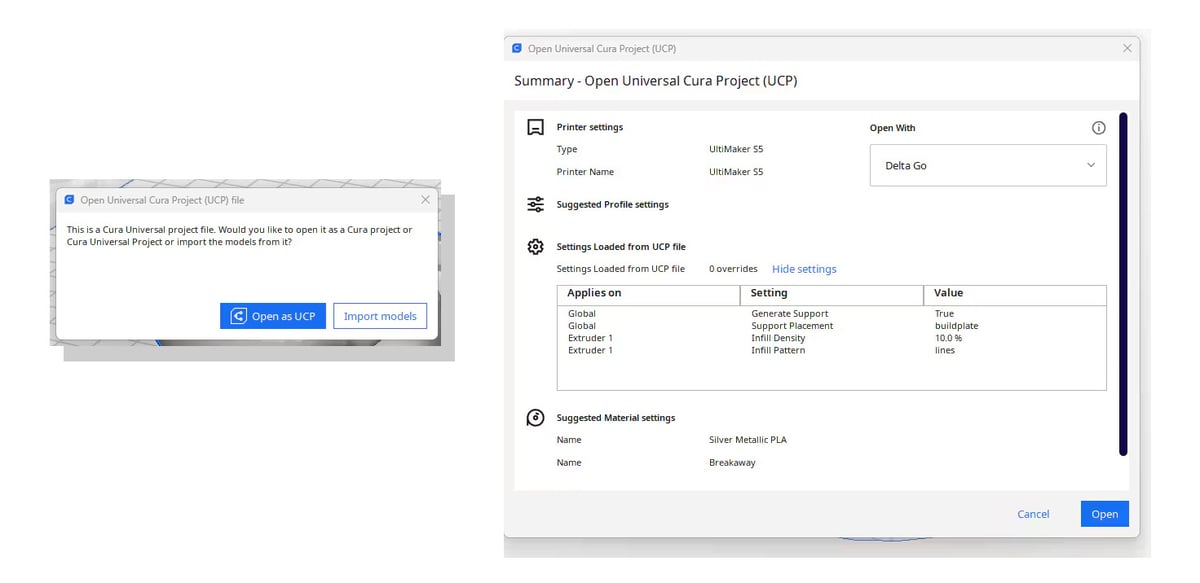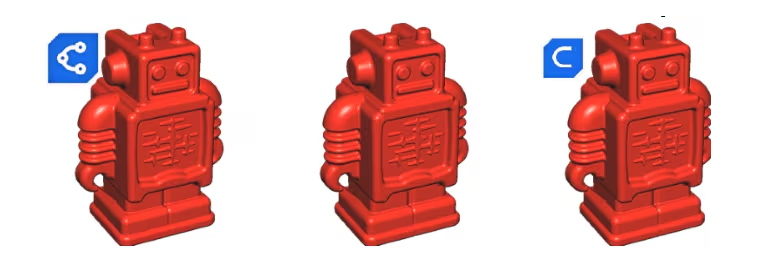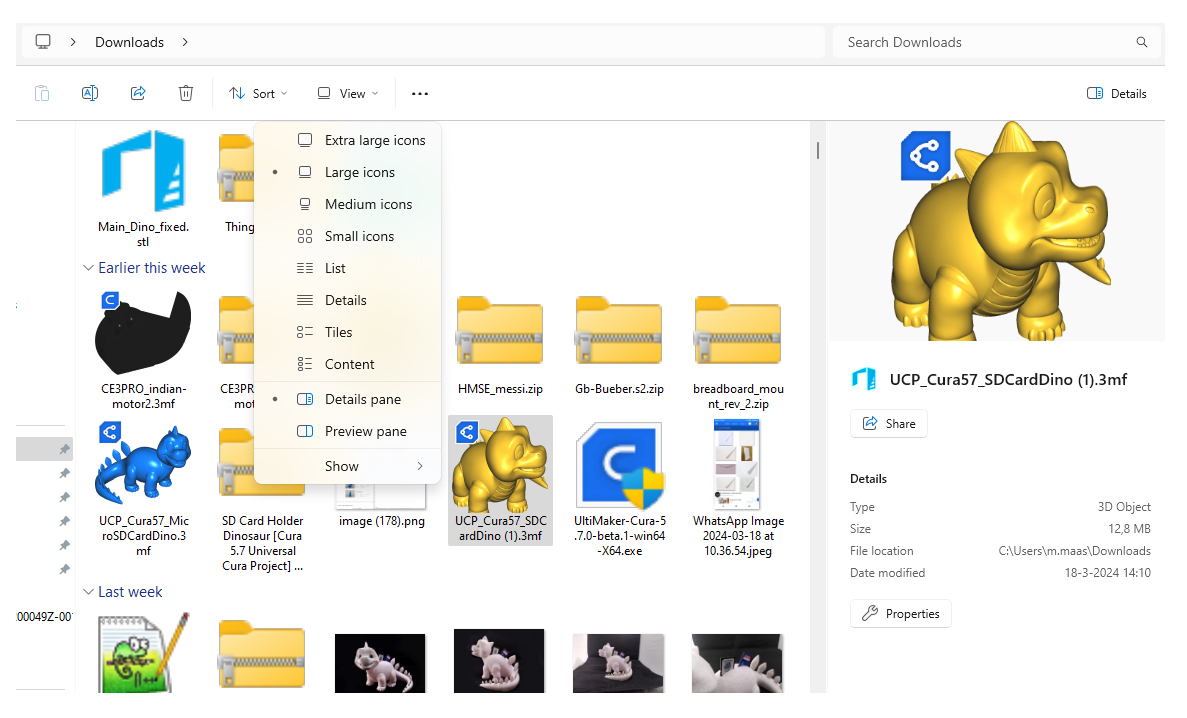The file-sharing and community aspect of 3D printing is one of the main attractions for hobbyists and also a benefit to companies that can send files and digital inventory anywhere to be 3D printed.
Yet, when you share or sell 3D models, the parts that are actually printed could turn out different from what you intended. This is because STL files, the most popular format for 3D digital models, only contain the design, not any additional information or printer setting that would help someone successfully print the file. You can share a 3MF file of your part, which does include all of the print settings that you have applied to that model, but the settings are not universally applicable to all printers.
“If you accidentally include a setting value that conflicts with or does not take into account the specifics of the printer that the file is then printed on, the result could be anything from a failed print to a damaged printer,” says UltiMaker, the creator of slicing software Cura.
But now there’s a fix.

Enter: Universal Cura Projects
The latest update of Cura, UltiMaker’s open-source slicer, introduces a new way to share both models and print settings with anyone regardless of what FDM 3D printer they have. Called Universal Cura Projects (UCP) in Cura 5.7, this new printer-agnostic project file enables you to share only the print settings that are common across nearly all printers.
For consumers, this all but ensures that a digital 3D model downloaded from a file repository like Thingiverse will turn out as expected. And for businesses, you can send parts to be printed by customers or by 3D printing service bureaus that may have various 3D printers and be confident of the resulting part properties.
A Universal Cura Project can be loaded on all 3D printers available inside of UltiMaker Cura (there are hundreds) and it will only contain model-specific settings and modifier meshes that the creator of the file selected to ensure a successful print job for people with less experience. If you’re a model designer with an active Patreon following, for example, you can help your customers print successfully by including print settings for your model that you’ve already found successful.
UCP files only include the settings that are either universal across all commonly used FDM printers or are safe to modify even when using a variety of different printer types. There are 40 allowed settings that can be included in a UCP export, including those that control supports, infill, and build plate adhesion.

Better Than a 3MF?
UCP is an export type, not its own file type so there is no “.ucp” extension. Instead, projects export using the .3mf file extension, but they have a number of safeguards in place that make them more reliable than a regular 3MF, according to UltiMaker.
To tell the difference between a UCP 3MF and a regular 3MF, you have to preview it. All UCP files will have the UCP symbol in the top left corner of the image preview as shown above, far left. However, note that this preview symbol is only when viewed on Windows, not Mac, and we here at All3DP were unsuccessful when we tried to see the UCP icon when previewing the UCP 3MF that UltiMaker posted on Thingiverse, but as you can see from the screenshot below that UltiMaker sent to us, it does exist, but may have some preview quirks.

When selecting a Universal Cura Project, you can choose to either import the models into Cura as you normally would or to open it as a Universal Cura Project in Cura. If you open a UCP 3MF file in another slicer, such as Bambu Lab or Prusa, the print settings will be lost. That’s why they call it a Universal “Cura” Project. And, naturally, if you convert a UCP 3MF file to an STL file, the print setting again will be lost.
When opening the file as a UCP in Cura, a screen will pop up that shows you which settings were included by the creator. In the top right corner, you can select the printer on which you want to open the model. This will overwrite the settings on the printer and remove any models already loaded on the build plate.
If you’re designing a digital model for distribution in Cura as a UCP you can determine meshes and settings relevant to the model including wall thicknesses, infill settings, support placement, support density, brim distance, and some that are still considered experimental, such as coasting, adaptive layers, draft shield, and generate interlocking structures.
Is this the beginning of universal boost in print successes? Time will tell.
License: The text of "Like Sharing 3D Models? This Is the Cura Update You’ve Been Waiting For" by All3DP Pro is licensed under a Creative Commons Attribution 4.0 International License.